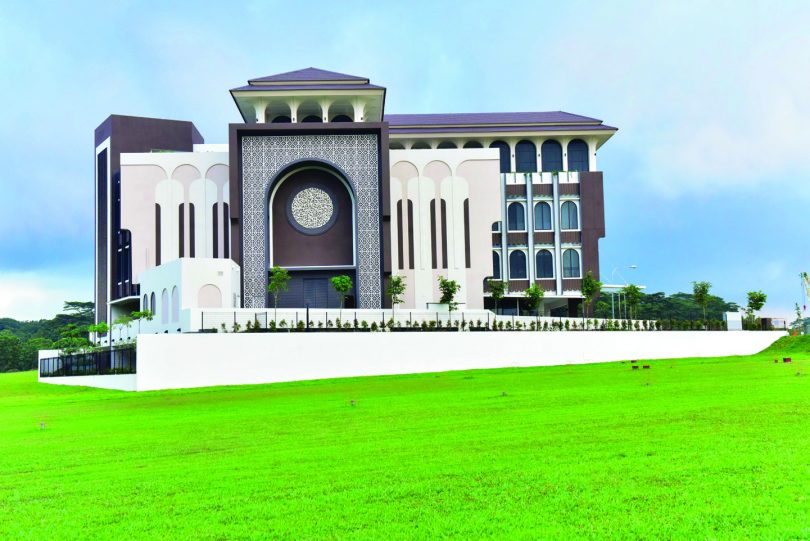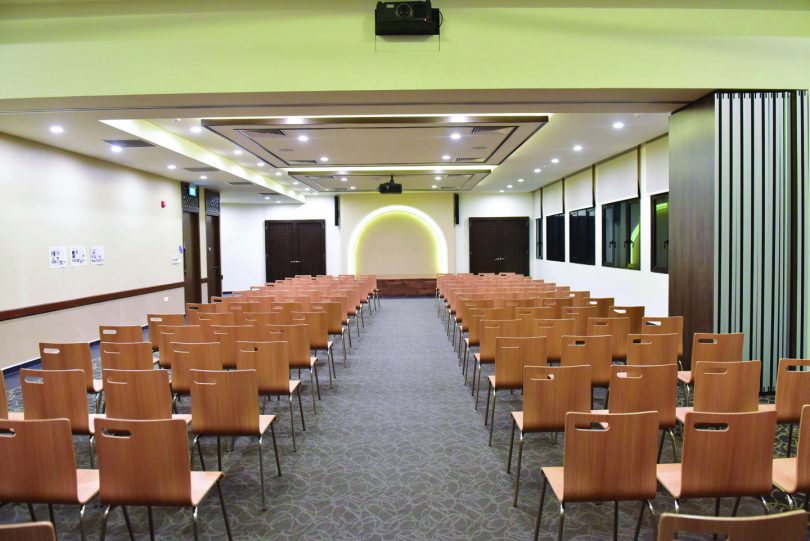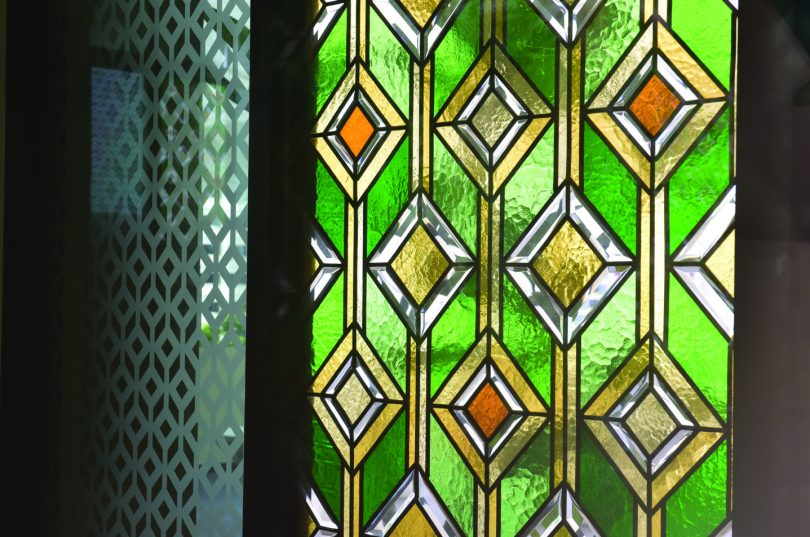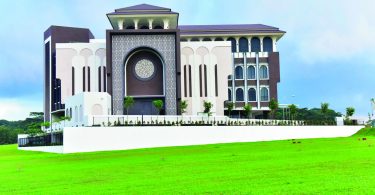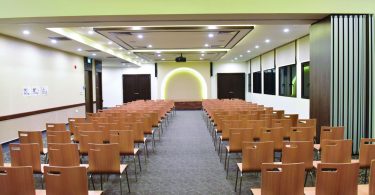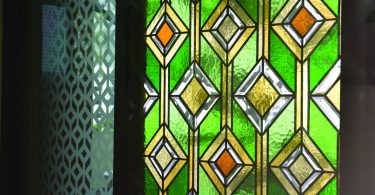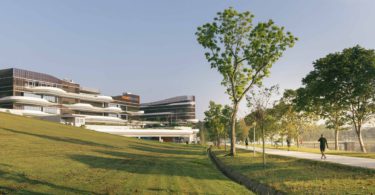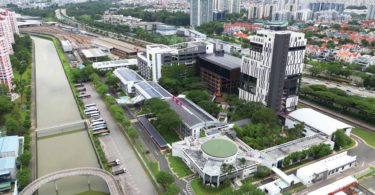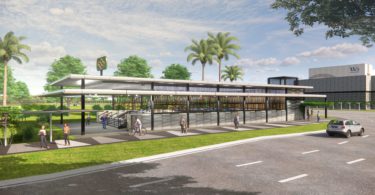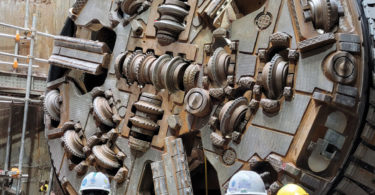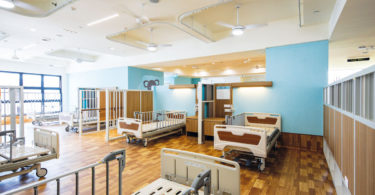Built at a cost of SGD18 million, Masjid Yusof Ishak is Singapore’s 26th mosque that is sponsored by the Mosque Building and Mendaki Fund (MBMF), a community fund sustained through contributions by all working Muslims in Singapore. It is the 71st and the newest mosque in Singapore today.
The new mosque in Woodlands has a capacity for 4,500 congregants; and includes a dedicated praying area for women, lifts and ramps for older worshippers, and a large space for families.
Named after the well-adored first president of Singapore, the imposing mosque is the newest addition to the Muslim community in Singapore.
To memorialise Encik Yusof Ishak’s contributions to Singapore’s nation-building, the mosque drew inspiration from his professional and private residences. The design breaks away from the traditional grand domes and adopts a genuine feel of a Malay house, blending traditional mosque characteristics with Nusantara heritage and elements, while also addressing functional requirements.
The mosque stands firmly committed to preserving the legacy and aspirations of Encik Yusof Ishak. A heritage wall at the fifth floor of the mosque embodies the key values that the late president stood for. Chief of these is a firm commitment to multiculturalism, preserving and promoting religious harmony. This was one of Encik Yusof Ishak’s earliest contributions, as he rose to the challenge of bringing together a multiracial nation, building trust, confidence and unity among Singaporeans.
MODERN TWIST IN TRADITIONAL MALAY DESIGNS
Distinctive features of a tropical Nusantara house—such as eaves/overhangs, verandas, decorative fixed ventilation panels and beautifully crafted balustrades—are reinterpreted and expressed in a modern way befitting this new-generation mosque.
Islamic motifs and Nusantara pattern are also used throughout the mosque, including the prayer hall, as an integrated geometrical art form of the Nusantara Islamic heritage. The patterns are featured prominently on the stained glass windows incorporated in the atrium on the fifth floor. These modern and reinterpreted features are in tandem with the aspirations of Encik Yusof Ishak, who stood for modernisation and progressiveness while keeping true to one’s heritage.
EMBRACING ECOLOGY FOR SUSTAINABILITY
The mosque is designed to be naturally ventilated, except for the office areas, multipurpose hall, auditorium and seminar rooms, which are outfitted with air-conditioning. Taking the cue from the tropical Nusantara house, ventilation panels are adapted into the façade above the casement windows as a climatic response to bring the wind in, but keep the rain out. Most rooms are planned along the building edges to enjoy good natural lighting. The etched glass pattern on the windows and the aluminium fins beside help to reduce glare and heat.
The mosque is encircled by a green strip along its boundary to provide visual relief and muffle surrounding noise. Communal gathering spaces on the first storey also provide some soft landscaping opportunities. The mosque has also designed and constructed an orchid sanctuary. The roof terrace can double up as an extended prayer area when the need arises. It is also lined with planter boxes that help soften the building’s edge.
The mosque is designed for the community to fully utilise all its spaces. The first level and multipurpose hall can be adapted to host small-scale functions and events. At the second floor entrance, benches are provided to create a communal space to facilitate informal gathering and interaction. This is comparable to the Anjung in a Malay house, which is an entrance porch to receive and welcome guests.
MATERIALS
One main feature of the mosque is the mimbar. In order to have an ornate floral design timber centrepiece, skilled craftsmen were sourced in Malaysia to hand carve and fabricate the mimbar in teakwood.
OVERCOMING CONSTRAINTS
The Yusof Ishak Mosque closely adheres to the standard requirements for mosques. For instance, the mosque must orientate towards Mecca at 293 degrees. The entrance to the main prayer hall must be accessible from the back, the saff grid, and the orientation. The mimbar and the imam room must be connected to allow easy access. Exterior tiles have to be slip-resistant as they may get wet after the ablution during prayers, etc.
As the mosque was the first development in the middle of a green land along the incomplete Woodlands Drive 17 and the surrounding infrastructure was not fully established yet, the project team inevitably encountered a couple of challenges that they had to work creatively to address.
For example, the team did not have any construction access to the mosque, leading them to plan for a temporary construction access for the builder to transport building materials and get to the site daily. In addition, the sanitary and water systems were not in place. There was almost no telecommunication network, causing some inconvenience for the staff working long hours on-site. On top of those issues, they also had to work within boundaries designated by the Land Transport Authority (LTA) currently constructing the Thomson-East Coast Line.
Building a place of worship was a challenge on its own, as there were more requirements to abide by compared to commercial or residential buildings. Taking guidance from the Islamic Religious Council of Singapore (MUIS), the team looked into how the congregants would use the space, from the moment they enter the mosque. They also took into consideration that women were not to be mixed with the male worshippers in the main prayer hall. They wanted to make sure the mosque is not only a place that brings everybody together spiritually, but also an environment in which all traditions are respected.
The project team resolved most of the challenges after coordinating with the MUIS and LTA representatives, and managed to deliver the project without delay.
PROJECT DATA
Project Name: Masjid Yusof Ishak (Yusof Ishak Mosque)
Location: Woodlands Drive 17 off Woodlands Avenue 1, Singapore
Completion Date: Officially opened on 14 April 2017
Site Area: 2,500 square metres
Gross Floor Area: 3,923 square metres
Number of Rooms: Seven main rooms including multipurpose hall, classrooms, conference rooms and auditorium
Building Height: 25.25 metres
Client/Owner: Islamic Religious Council of Singapore (MUIS)
Architecture Firm: RSP Architects Planners & Engineers Pte Ltd
Principal Architect: Lee Kut Cheung
Project Manager: CPG Consultants/Construction Professionals
Mechanical & Electrical Engineer: AECOM Singapore Pte Ltd
Civil & Structural Engineer: AECOM Singapore Pte Ltd
Quantity Surveyor: Surbana Jurong Consultants Pte Ltd
Main Contractor: Ken Pal (S) Pte Ltd
Images: MUIS

 Malaysia
Malaysia Hong Kong
Hong Kong Indonesia
Indonesia Tiếng Việt
Tiếng Việt ประเทศไทย
ประเทศไทย


